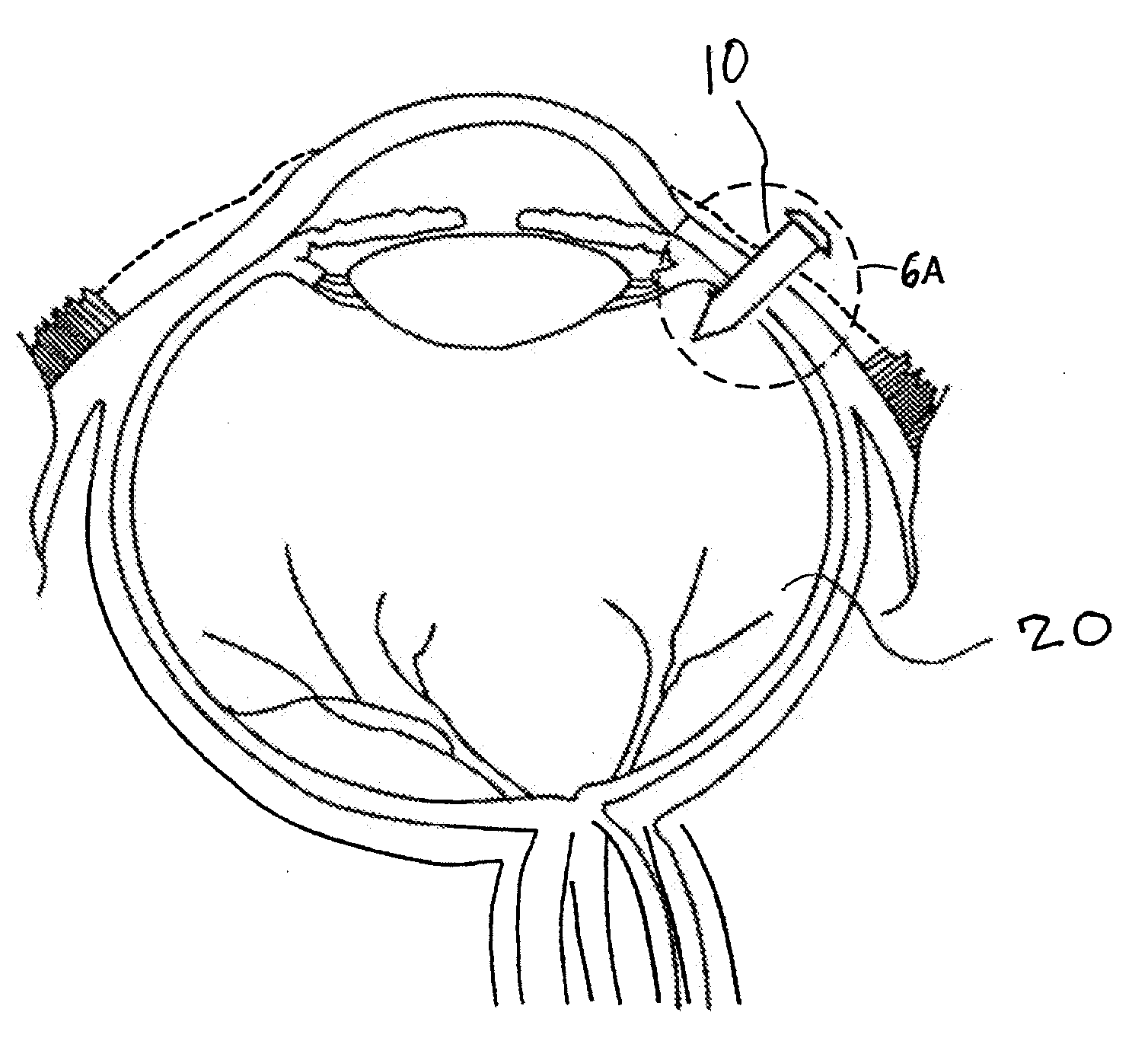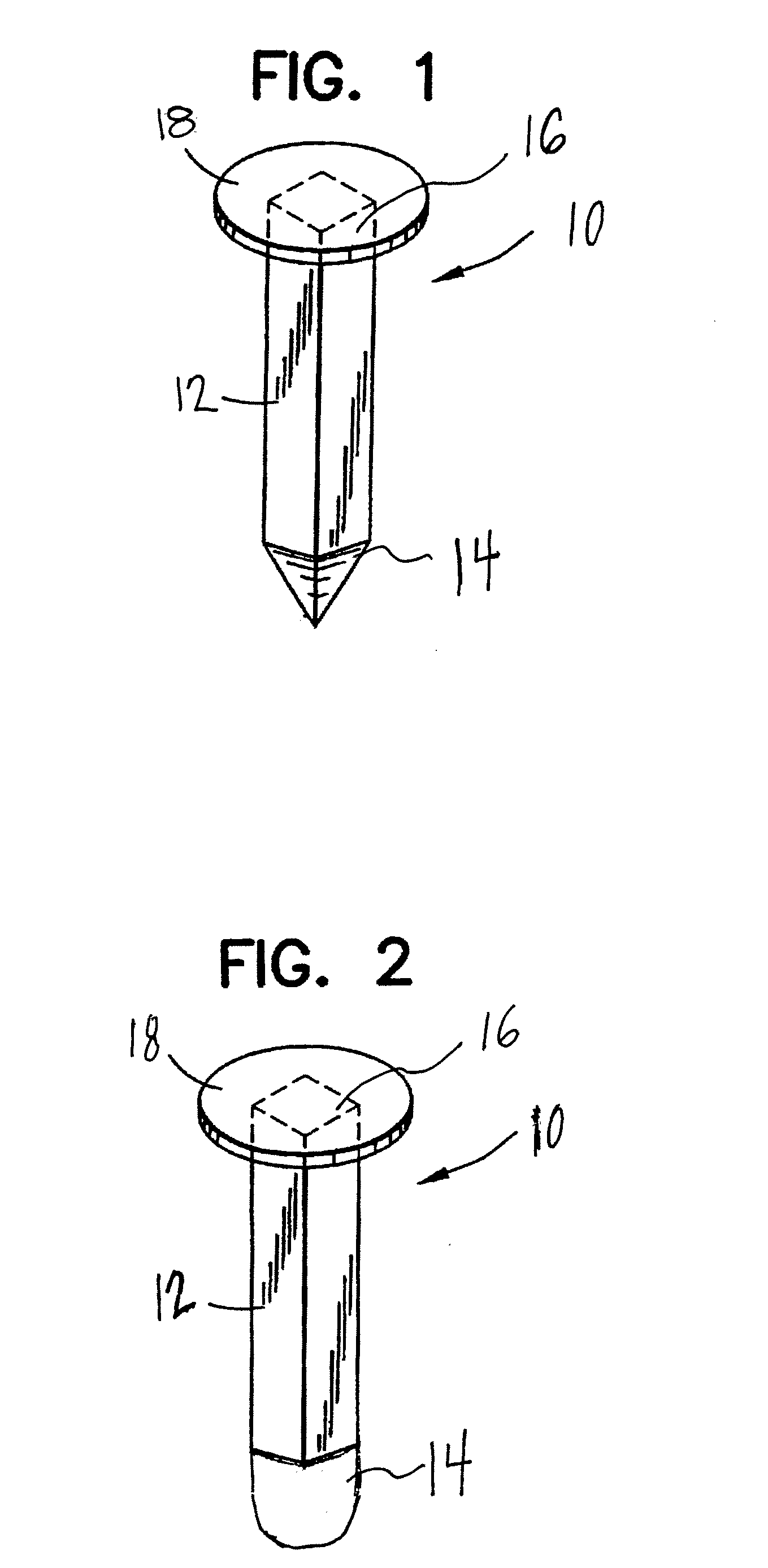Drug delivery devices
a delivery device and drug technology, applied in the field of drug delivery devices, can solve the problems of exposing patients to the risk of systemic toxicity, ocular absorption of systemically administered pharmacologic agents can be limited by the blood ocular barrier, and many challenges in the delivery of drugs to the ey
- Summary
- Abstract
- Description
- Claims
- Application Information
AI Technical Summary
Benefits of technology
Problems solved by technology
Method used
Image
Examples
example 1
[0079]The following materials were used in preparing a polymeric matrix for use in the drug delivery system of the present invention:[0080]Diclofenamide (DCP), (Sigma D-32683)[0081]PLGA (85:15), 0.53 dl / g IV, (Birmingham Polymers, Inc).
[0082]DCP and PLGA were mixed in a 35:65 w / w ratio and melt extruded using a Lab Mixing Extruder (LME), (Dynisco Instruments, Inc.). The ingredients were first allowed to mix inside the heated barrel for at least 5 minutes and then extruded by pulling filament strands of approximately 0.5 mm in diameter. The entire extruded batch was collected as strands and then physically mixed together and reextruded under the same process conditions. The final batch of filaments was collected and stored in a dry dessicator box FOR future use.
[0083]The process conditions used for the LME to prepare the 35% DCP implants were as follows:[0084]Rotor Temperature: 125° C.[0085]Header Temperature: 130° C.[0086]Rotor RPM: 10 setting[0087]Filament Line puller setting: 40-8...
example 2
[0088]A second polymeric matrix for use in the drug delivery system of the present invention was prepared in substantially the same manner as in Example 1. The following materials and process conditions were used for this example:
[0089]Materials:[0090]35% Dichlorphenamide[0091]10% (50:50) DL-PLGA, 0.39 I.V.[0092]15% (75:25) DL-PLGA, 0.19 I.V.[0093]35% DL-PLA, 0.24 I.V.[0094]5% TPGS* *d-alpha tocopheryl polyethyleneglycol 1000 succinate
[0095]Process Conditions:[0096]Rotor Temp: 90° C.[0097]Header Temp: 95° C.[0098]Rotor RPM: 30-40 setting[0099]Filament Line puller setting: 55
example 3
[0100]Preparation of a Non-Deformable Tack.
[0101]A precision bored hollow tube threaded on both ends made of 316L stainless steel was perforated with small—50 um holes using a laser. A threaded pointed member and threaded head piece were precision ground on a lathe using the same grade material as the hollow tube. The threaded pointed member was threaded onto the hollow tube.
PUM
 Login to View More
Login to View More Abstract
Description
Claims
Application Information
 Login to View More
Login to View More - Generate Ideas
- Intellectual Property
- Life Sciences
- Materials
- Tech Scout
- Unparalleled Data Quality
- Higher Quality Content
- 60% Fewer Hallucinations
Browse by: Latest US Patents, China's latest patents, Technical Efficacy Thesaurus, Application Domain, Technology Topic, Popular Technical Reports.
© 2025 PatSnap. All rights reserved.Legal|Privacy policy|Modern Slavery Act Transparency Statement|Sitemap|About US| Contact US: help@patsnap.com



